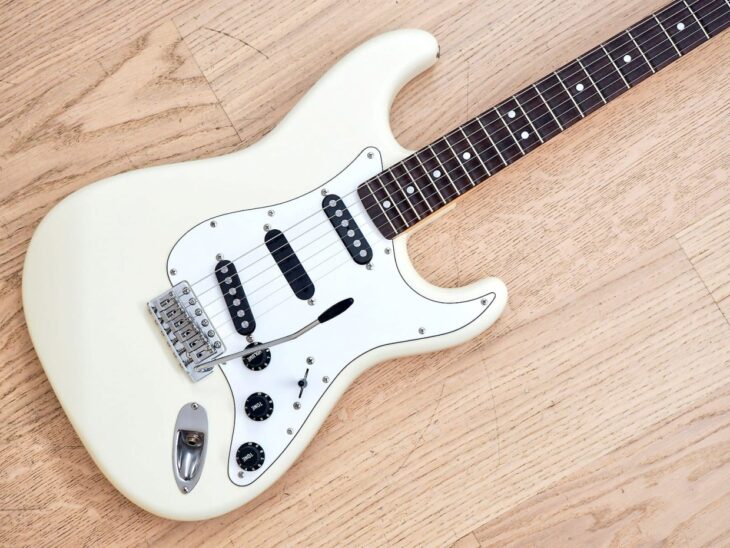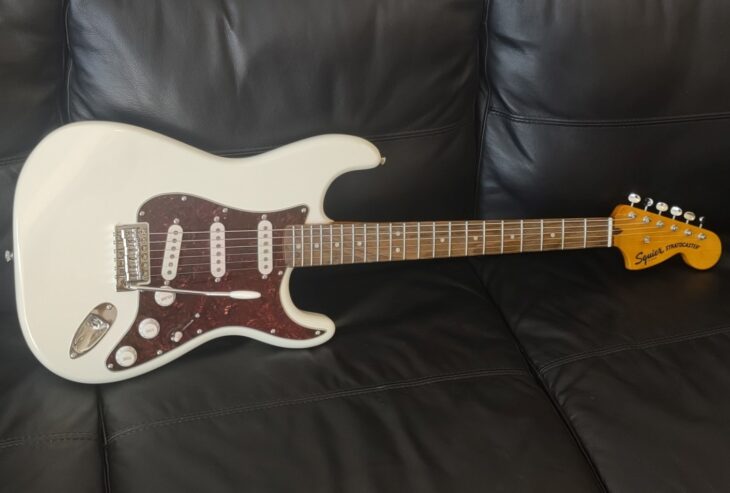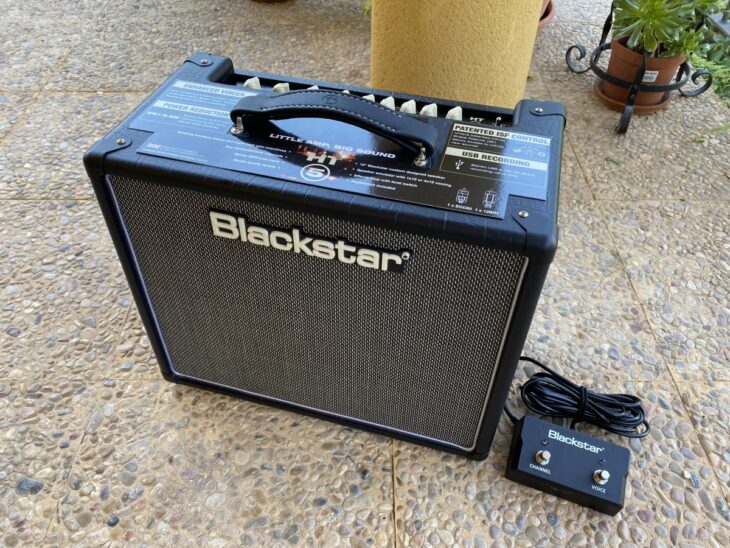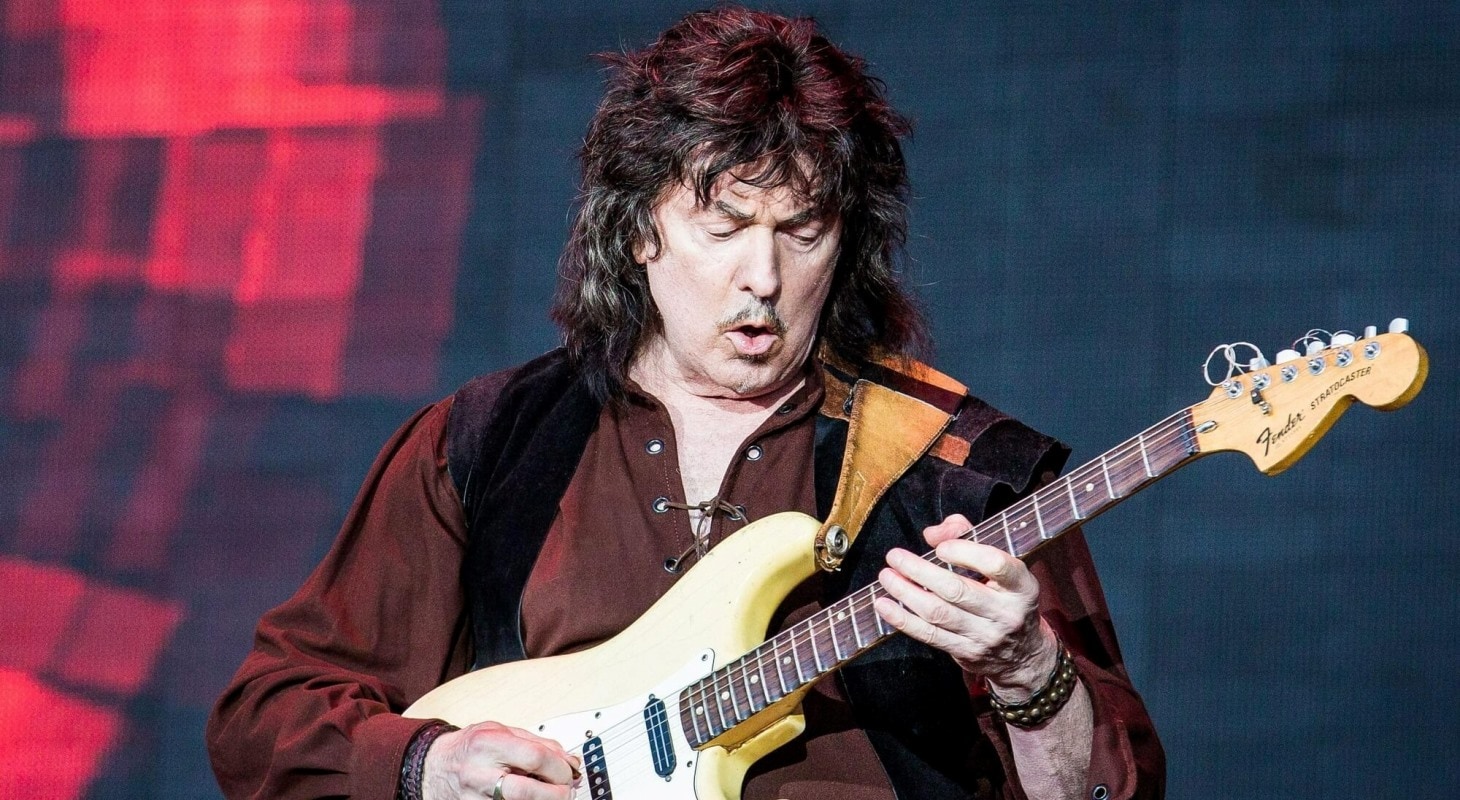It’s something of a guitar-playing axiom that every guitarist, early in their playing career, learns the riff to “Smoke on the Water.”
Although the song was by far Deep Purple’s biggest hit, its genius simplicity belies the band’s truly virtuosic musicianship and leaves many players woefully missing out on some of axeman Ritchie Blackmore’s transcendent playing.
The proto-metal sledgehammer of Deep Purple’s various major hits, like “Highway Star,” “Hush,” and, of course, “Smoke on the Water” rightly remain staples of classic rock radio to this day.
In this article, I’ll run through the key pieces of gear necessary to nail Ritchie Blackmore’s guitar sounds and the orchestration considerations that made his gear choices so important.
Table of Contents
Deep Purple Guitars
Deep Purple’s 1970s heyday is associated with one guitar and one guitar only. Ritchie Blackmore famously played Fender Stratocasters throughout almost his entire career, and a harsh, overdriven Strat sound is his signature.
In fact, it’s so integral to the Deep Purple sound that subsequent players, like Tommy Bolin and Steve Morse, chased the Strat sound during their tenures with Purple.
Fortunately, Fender guitars released a Blackmore signature model Stratocaster, complete with contrasting black pickups and scalloped rosewood fretboard. Unlike Blackmore’s own Stratocaster, it lacks an entirely decorative strap lock on the headstock.

Key to this signature model is high-output Seymour Duncan Quarter Pound Flat single-coil pickups.
Blackmore, unlike many of his hard-rock contemporaries, avoided putting humbuckers in his guitars. While the players in Iron Maiden put aftermarket humbuckers in their Strats, Blackmore stayed true to the Stratocaster’s single-coil tone, despite the enormous feedback and hum this created when playing at Deep Purple’s tremendous volume.
The main reason he made this choice was that Blackmore was competing for sonic space in Deep Purple. This mainly came in the form of keyboardist Jon Lord, whose virtuosic playing rivaled Blackmore’s own.
Lord, like Blackmore, played his Hammond organs through Marshall amps. These organs had a much thicker, fuller sound than a guitar. Blackmore had to embrace a treble-heavy tone to cut through the mix with Jon Lord.
For this reason, I wouldn’t recommend trying any humbucker-equipped Superstrats for the Deep Purple tone.
If you’re on a budget that won’t stretch to the Blackmore signature Fender, a nice Olympic White Squier Stratocater will get you close to his sound.

The scalloped fretboard of Blackmore’s own guitar is not strictly necessary to achieve his tone, although it will make playing his lightning-fast neo-classical runs a little easier.
However, if you go for the Squier, I recommend looking at some Seymour Duncan single-coil pickups, if only to add extra power and punch to your tone.
Deep Purple Amps
Like so many other guitarists from the golden age of hard rock, Ritchie Blackmore was an avowed player of Marshall amplification.
These days, he boasts an ENGL signature model, but the classic Deep Purple tone was all Marshall. However, Ritchie made some serious modifications to his Marshall amplifier, much to the chagrin of Jim Marshall himself.

Blackmore’s original set of amplifiers for Deep Purple’s hard rock era were 200-watt Marshall Major stacks. Supposedly, Blackmore went to the factory and had the amp boosted up to 400 watts. He wanted as much treble as he could get out of his sound, so he insisted on removing resistors and serenading the factory as he tested the amp, at full volume.
These 200-watt vintage Marshalls have been out of production for decades, and are very unwieldy to carry. That’s without mentioning the ear-shattering volume they deliver. Fortunately, there are plenty of Marshall amps better suited to the modern player.
I’d recommend the Marshall Studio Vintage as the amplifier closest in spirit to the Super Lead amplifiers of the time, which were very similar tonally to the Marshall Major.
Failing that, the Blackstar HT-5 combo was built by former Marshall technicians, and has a very Marshall-esque sound, albeit with a more even volume and gain taper than a real Super Lead would have.

Deep Purple Amp Settings
Although Ritchie Blackmore constantly sought more treble in his guitar tone, I find his recorded tones, particularly on lead parts, to be pleasantly warm and sweet.
I’ve based the below amplifier settings on the sledgehammer attack of the main riff from “Smoke on the Water.” You can achieve the lead guitar tone for the solo by, as Blackmore did, switching to your neck pickup and kicking on a boost pedal.
Volume: 7
You really need to run your amplifier nice and loud to achieve this tone. Subtlety is not the name of the game here.
Bass: 8
Ritchie Blackmore had to scoop out bass frequencies on his Marshall Major because it was a bass amp. Marshall-style guitar amps are naturally treble-forward, so you’ll need to compensate with low-end warmth.
Mids: 7
Make sure you have plenty of midrange honk and snarl to bring your tone to life.
Treble: 4-5
Your naturally treble-forward guitar and amp combo will demand some taming of your top end.
Deep Purple Pedals
Deep Purple did most of their studio work before the advent of guitar pedals. It’s difficult for many players to imagine now, but in the ‘70s, few guitarists had the option to simply add effects to their signal chain. Most players in those days simply plugged a guitar into an amp and hoped for the best.
The Catalinbread Dreamcoat offers a similar effect to the tape echo preamp Blackmore was using in the 1970s to achieve his hard rock guitar tones.

For solos and to add some additional top end, I’d recommend the Fulltone Ranger, a clone of the legendary Dallas Rangemaster. Although Ritchie Blackmore didn’t play a Rangemaster, he used a similar treble booster circuit with his Marshall Major in pursuit of his heavy rock sounds.
Final Word
Whether you’re powering through “Smoke on the Water” or you have your sights set on “Space Truckin’”, rest assured that you could have Deep Purple’s hard rock tones at your fingertips with an appealingly simple guitar rig.


What amp was used on Hush song in 1968?
Many thanks